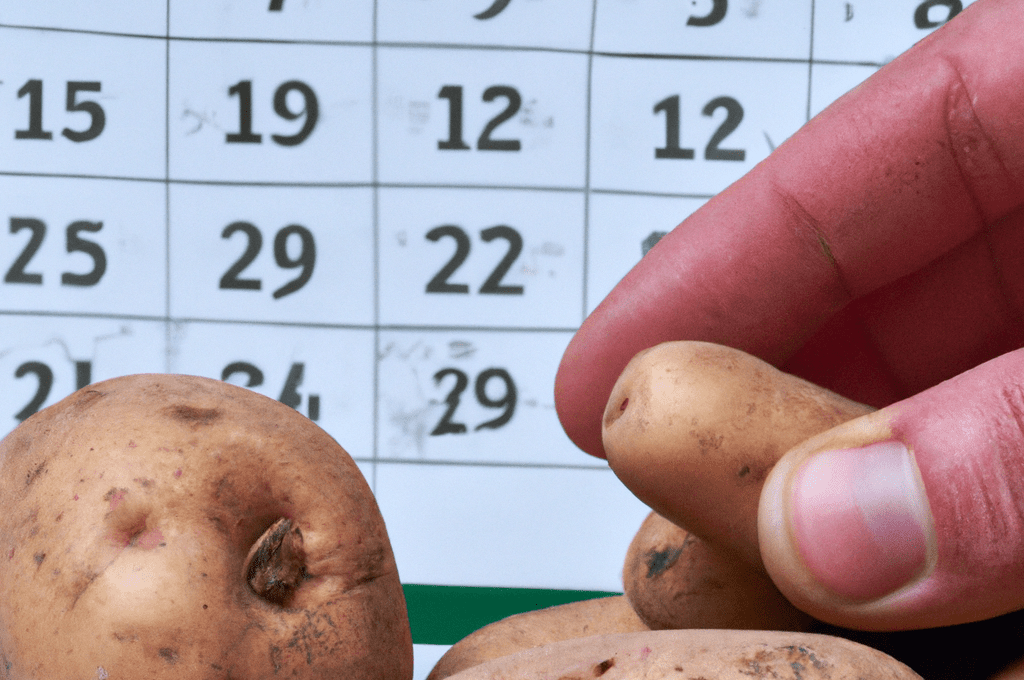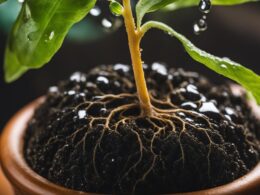Are you a resident of USDA hardiness Zone 8 and looking to grow potatoes? Timing is crucial for a successful harvest, and this guide will help you navigate the best planting times and conditions.
Zone 8 covers a large portion of the southern US and western coastal regions, and the sub-zones within it vary in their ideal potato growing conditions. As a beginner or seasoned gardener, understanding the right timing and variety selection can make all the difference in your potato crop’s success.
Potatoes prefer cooler temperatures, and soil temperature plays a critical role in tuber growth. In this guide, we will explore the best times to plant potatoes in Zone 8 and provide tips for maximizing your harvest. Additionally, we will discuss potato varieties that are suitable for this area, ensuring that you choose the right type to grow for your desired outcome.
By following this guide, you can increase your chances of a bountiful potato harvest and enjoy the fruits of your labor. So let’s dive into the world of Zone 8 potato planting and get ready to grow some spuds!
Quick Summary
- Best time to plant potatoes in Zone 8 is in January or February when soil temperature reaches at least 40°F
- Potatoes grow best in cooler temperatures with nighttime temps in low 50’s and daytime temps near 80°F or below
- Staggering plantings over several weeks reduces stress of harvesting all potatoes at once and increases success of high yields at harvest time
- Choosing shorter-maturity varieties allows for early spring or fall planting and full crop production before winter frosts
Best Planting Time
If you’re looking to plant potatoes in Zone 8, the best time to do so is in January or February when the soil temperature reaches at least 40°F. Potatoes grow best in cooler temperatures, and nighttime temps in the low 50’s and daytime temps near 80°F or below are ideal for potato growth.
Before planting, make sure to prepare the soil properly by adding organic matter and loosening the soil to a depth of at least 8 inches.
When planting, make sure to plant the seed potatoes at a depth of 4-6 inches, with the eyes facing up. Staggering plantings over several weeks reduces the stress of harvesting all potatoes at once.
Choosing shorter-maturity varieties allows for early spring or fall planting, and many of these varieties mature between 80 to 100 days, increasing the success of high yields at harvest time.
Remember that the actual soil temperatures should be considered when planting potatoes, as soil temperature affects tuber growth. By following these guidelines for planting depth and soil preparation, you can ensure a successful potato harvest in Zone 8.
Ideal Temperature Conditions
For optimal growth, you’ll want to aim for nighttime temperatures in the low 50’s and daytime temperatures near 80°F or below when planting your potatoes in USDA hardiness Zone 8. This temperature range is ideal for potato growth and tuber development.
To ensure your potatoes receive the best possible conditions, consider the following tips:
-
Soil preparation is key to ensuring your potatoes grow well. Ensure that the soil is well-draining and has a pH between 5.0 and 6.0. Incorporate compost or well-rotted manure to improve soil fertility.
-
Proper watering techniques are also crucial in potato growth. Water your potatoes regularly, about 1-2 inches per week, and avoid overwatering which can lead to rotting. Mulching can help retain moisture in the soil and reduce the need for frequent watering.
By following these tips and planting during the ideal temperature range, you can ensure a successful potato harvest in Zone 8.
Potato Varieties for Zone 8
To ensure a successful potato harvest in your area, it’s important to choose potato varieties that are hardy to different soil conditions.
Red Pontiac, Yukon Gold, Irish Cobbler, Kennebec, Red Norchip (Norchief), Caribe, and Cranberry Red are all great options for planting in Zone 8. These varieties have been proven to thrive in the temperate climate of Zone 8 and can handle different types of soil conditions.
In addition to choosing the right potato varieties, it’s also important to use proper harvesting techniques. Staggering plantings over several weeks can help reduce the stress of harvesting all potatoes at once. Many of these varieties mature between 80 to 100 days, increasing the success of high yields at harvest time.
By taking these steps and paying attention to soil conditions and harvesting techniques, you can enjoy a bountiful potato harvest in your Zone 8 garden.
Frequently Asked Questions
What are some common pests and diseases that affect potatoes in Zone 8?
To protect your potatoes in Zone 8, controlling pests and preventing diseases is key. Keep an eye out for potato beetles and blight. Proper crop rotation and using disease-resistant varieties can help keep your harvest safe.
Can potatoes be grown successfully in containers in Zone 8?
Yes, you can grow potatoes successfully in containers in Zone 8. Container gardening is a convenient option for tighter spaces. Best potato varieties for container gardening include Yukon Gold, Red Norchip, and Caribe.
How often should potatoes be watered in Zone 8?
To ensure healthy potato growth, water them 1-2 inches per week in Zone 8. Monitor soil moisture levels and use mulching to retain moisture. Consider using irrigation systems for more efficient watering.
Are there any companion plants that can help improve potato growth in Zone 8?
Companion plant options for improving potato growth in Zone 8 include beans, corn, and peas. Benefits of intercropping include improved soil health, pest control, and increased yield. Planting marigolds can also help deter pests.
What are some common mistakes to avoid when planting and growing potatoes in Zone 8?
Avoid common mistakes when planting and growing potatoes in Zone 8. Choose varieties suitable for your soil, prepare the soil properly, and stagger plantings to avoid stress. Harvest when leaves die back and store properly.









